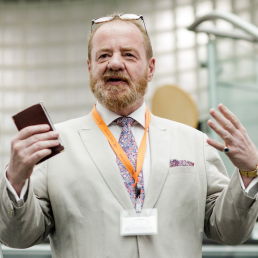I always like to leave some time before writing about the World Smart City Congress in Barcelona to give myself a reality check. The main reason is that while you are with around 20,000 other engaged and excited people from around the globe, it is difficult not to suffer from group think.
It’s always instructive to see who has “gone big” each year and who has cut back, as it reflects how the market is developing. This is equally true of the countries involved and the major themes behind the solutions presented.
Enormous single stands from the likes of IBM and Schneider have come and gone, and new entrants like Mastercard have taken their place, but there is a definite move towards the power of partnership. Global players such as AWS and Red Hat are happy to have a small presence on the Fiware booth. Companies the size of Accenture and Siemens ply their wares from the Microsoft booth and Nvidia and Dell promoted the synergies between their solutions at a combined stand.
This move can also be seen with natural solution curators such as professional service providers. Deloitte ran one of the busiest and most popular stands as a platform for partners to display the depth and breadth of their market reach.
There was a wide spectrum of technology being promoted from smart city 101 type parking and lighting solutions to futuristic visions of the benefits of the Metaverse. What became clear though was that better and more efficient use of data was the force majeure behind many of the solutions being presented.
This was matched by a focus on the security, privacy, governance and ethics of data collection and use. It was heartening to hear tech vendors highlighting trust, democratisation, diversity and sustainability alongside how many new widgets their solution had.
The big difference this year was the emergence of cross-industry partnerships. At IDC, we have been researching the new industry partner ecosystems that will drive the market.
In essence, to achieve the outcomes required from government clients there will need to be a coordinated approach across architectural, engineering and construction companies (AEC), commercial real estate (CRE) and tech vendors. Some AEC companies such as AECOM were at the event and we predict more will be there next year.
The technology solution that was ubiquitous throughout was digital twins. Digital twins evolved from BIM solutions used by AEC and CRE companies and are critical to both visualising data and for scenario planning. Government clients want to see a “golden thread of information” from data collection, through data synthesis into information made accessible by digital twins.
One consequence of the above is that the purview of “smart” has expanded. The original locus was captured by IBM’s Smarter Planet marketing back in 2008 and a recognition that new technologies had fundamentally changed the world.
The tech industry then spent the next decade looking for a customer focusing on cities as the best level of subsidiarity. Arguably, this has been less than successful as cities have never developed a customer with concomitant budget, responsibility and authority to engage in holistic solutions across all the functions of a city. This inability is exacerbated by an election cycle that reduces the ability for long-term planning. Ergo, we are still stuck selling point solutions.
The nascent cross-industry partner ecosystems outlined above provide a much needed expansion beyond City Hall to a return to the smarter planet idea just as we are beginning to recognise that we have a planet-sized problem. Carbon, energy, water and food are the new riders of the apocalypse.
See the Barcelona interview with Jennifer Schooling, director, Cambridge Centre for Smart Infrastructure and Construction, and me here University of Cambridge & IDC | Construction that Maximize Urban Potential (tomorrow.city).

